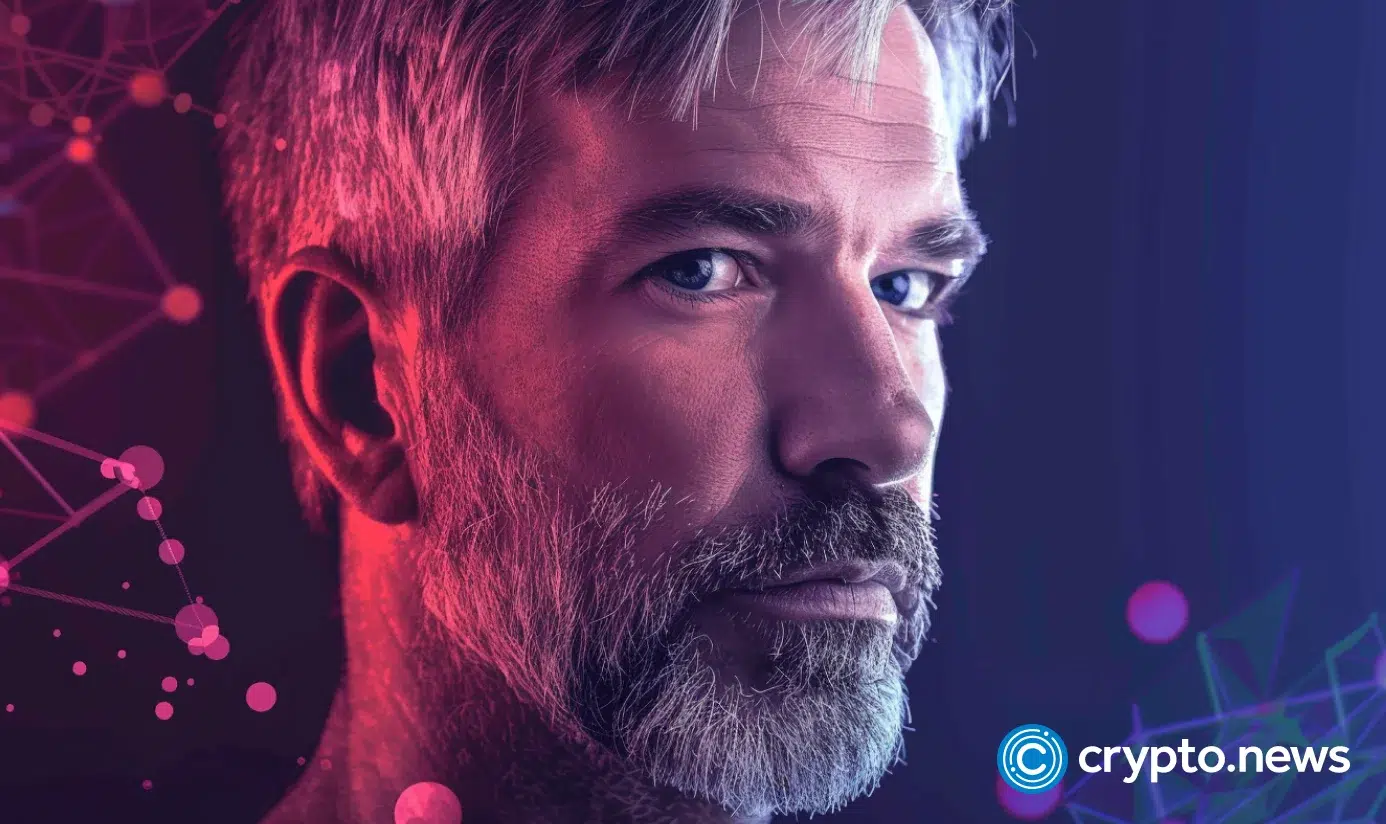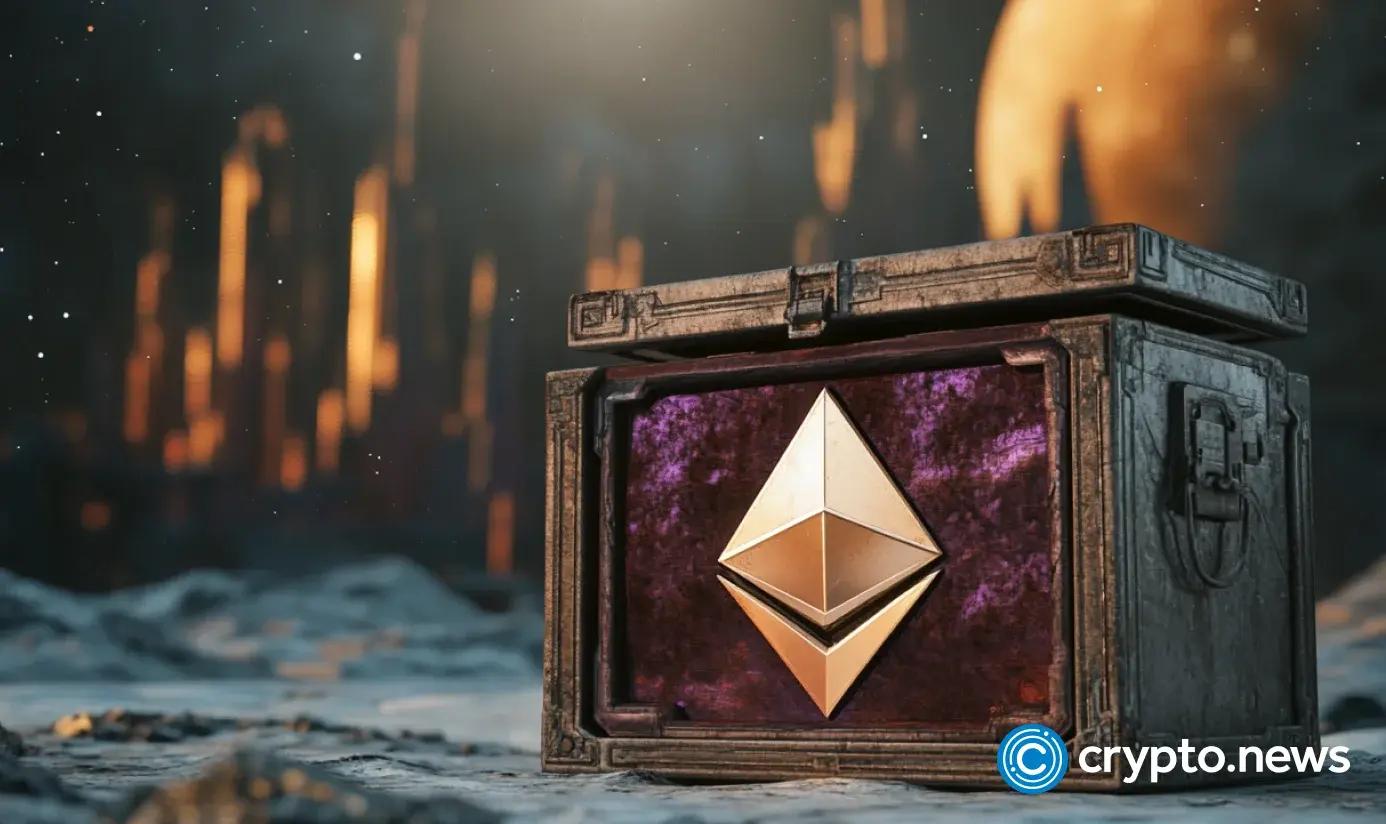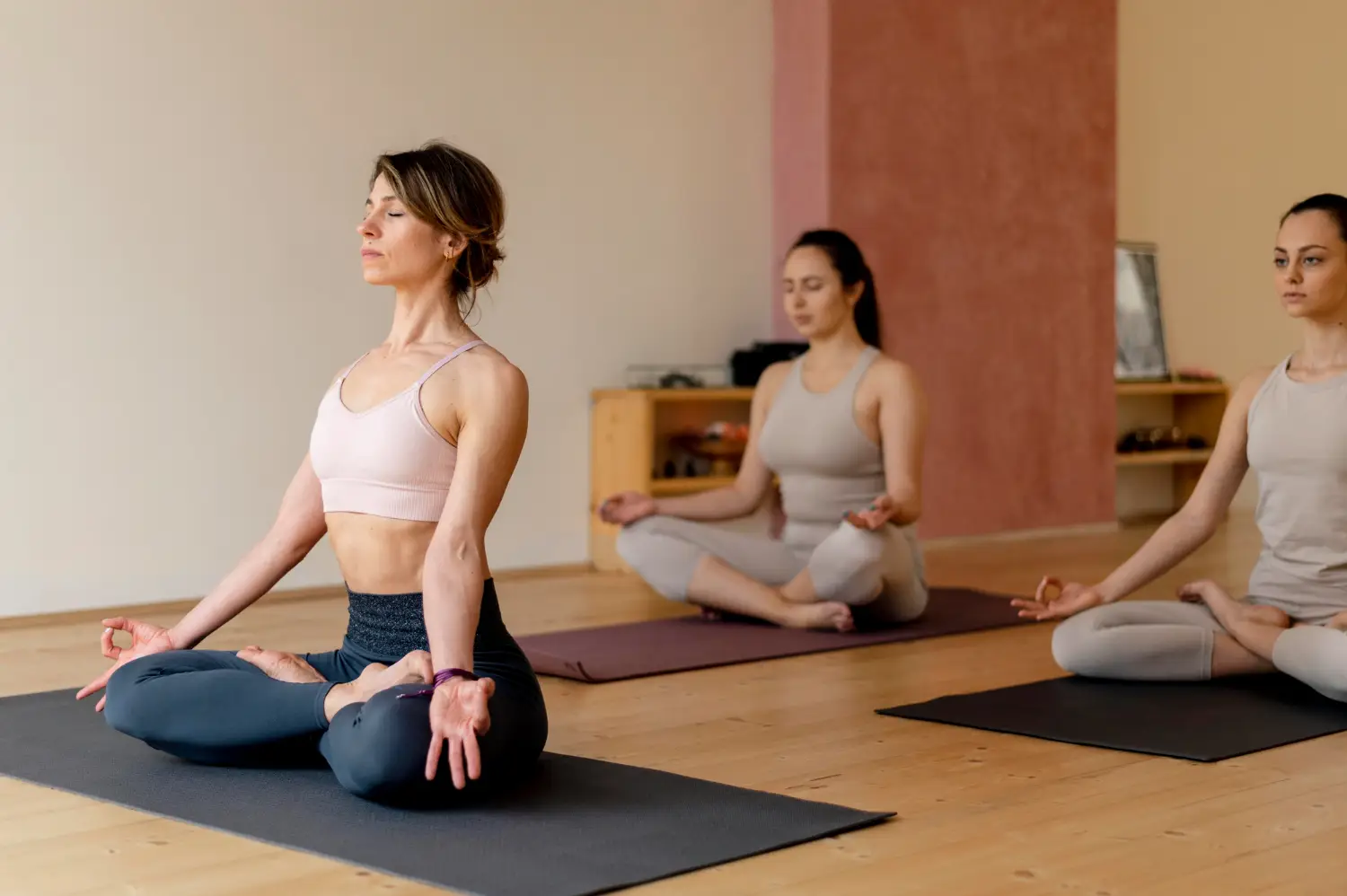Mohsen Mahdawi, the Buddhist
Understanding and responding to the latest college-student abduction by ICE The post Mohsen Mahdawi, the Buddhist appeared first on Tricycle: The Buddhist Review.

“I’m Mohsen,” he said, extending his hand. “Like Moses, but with an ‘n.’ ”
This is how the young Palestinian man introduced himself to me. Never mind that I was an ochre-robed, shaven-headed monk at the time. He connected with me through my uncle’s name (and the name of many other Jewish-American Buddhists’ uncles): Moishe. Morrie. Moe. Moses. A patriarch of my people. And a patriarch of his people.
We shook hands warmly. Mohsen was welcoming me to a meditation session I’d been invited to lead for the Columbia University Buddhist Association, also known as CUBA. Mohsen served for two years as president of this large active club for students interested in Buddhism and meditation. He remains listed on their website as “Visionary Advisor.” His leadership of this group is just one of many expressions of the engaged, community-oriented, metta-suffused Buddhist practice of a person who thereafter always addressed me, as he does many others, as “my friend.”
When ICE seized Mohsen Mahdawi and took him away last Monday, the initial coverage in the New York Times made only passing mention of his Buddhist identity. But this is no minor detail in the story of who he is. We need to understand Mohsen’s dharma path if we are to understand what they are trying to do to him and to all of us now. It’s at the heart of the truth that Mohsen Mahdawi is the opposite of the caricature our government is broadcasting to justify abducting and incarcerating him (I won’t sanitize it with the officialese term “detention”). And it’s a potent source of insight and inspiration on how to respond to this terrible injustice.
Mohsen’s Buddhist values underpin a deeply lived commitment to bridge-building across difference, fostering mutual respect and understanding, and finding a nonviolent, cooperative path to a just, peaceful, compassionate shared existence—whether on his college campus or in Israel/Palestine. The Times has since published a much fuller picture of Mohsen that draws connections between his work and his Buddhist practice, but let’s be clear here: This young man whom the American government is painting as some kind of divisive, terrorist-loving rabble-rouser grounded his life in the dharma.
************
Mohsen told me his story himself over the course of several CUBA gatherings during conversations over tea after we’d all meditated together. CUBA offers these gatherings of thirty or so students in the warm, resonant space of the choir room of Columbia’s St. Paul’s Chapel, furthering the group’s mission of, in Mohsen’s words, “making CUBA a welcoming home for all students seeking inner growth and deeper connections.” I have been profoundly moved to witness this diverse community of young people, in the midst of the impassioned tumult of student life at Columbia, coming together to cultivate and advocate for calm, insight, and balance, among other Buddhist virtues.
My first conversation with Mohsen was of the “how did you get interested in Buddhism?” variety. He shared that as a boy in Gaza during the early 2000s, he’d witnessed the killing of his best friend by an Israeli soldier. (The Times account rounded this story out for me: A 10-year-old Mohsen and his 12-year-old friend had decided they would go, like the other boys, to try throwing stones at an Israeli tank in or near their West Bank refugee camp.) In the aftermath of the shooting, as rage, sorrow, and vengefulness threatened to overwhelm him, a beloved uncle sat him down, held the depth of his pain, and opened him to the possibility of letting go. Somehow his uncle’s words, or his kindness, convinced Mohsen of the wisdom of looking beyond his anger and hurt to make something of his life, and in particular, to devote himself to building a better future.
In Buddhism, Mohsen discovered a spiritual practice that let him hold that little boy’s pain himself. He took up meditation early on, finding in it “solace and healing from . . . childhood trauma and loss,” as he puts it. Dharma practice deepened his understanding of the interdependence of his inner states of heart and mind with the impact he made on those around him. As he progressed, he learned to cultivate the wholesome inner states—calm, balance, friendliness—that make this outward impact positive. It supported a life of collaborative, constructive peace- and justice-building.
Current CUBA copresident Alejandro Menjivar—whom Mohsen always addressed as “my brother”—shared this impression of Mohsen as a meditator: “An image a lot of us carry is of him sitting. I’ve sat with him a lot. At meetings, after the meditation period ended, the teacher would begin the dharma talk, but Mohsen would just continue meditating, sitting upright in the lotus posture with his eyes closed. And he would be smiling.”
Alejandro continued, “When you interact with people who are irritated or angry, you can become irritated or angry. When you’d interact with Mohsen, he’d be so centered, so grounded and present, you would feel centered and grounded and present.”
The time and energy Mohsen devoted to CUBA reflects a particular vision of community. It’s a vision of connection within diversity, a centering on commonality and complementarity—in this case, between traditions and perspectives. In a typical semester, Mohsen and his friends might invite as visiting teachers not only Theravada monks (like me) but also Soto Zen priests, a Tibetan geshe, Korean Mahayana monastics, diverse lay teachers, and a Catholic contemplative friar. These students at one of America’s premier liberal arts institutions thus cultivated nonattachment to views, the Buddhist version of small-“l” liberal viewpoint diversity. The idea is to reach past narrow approaches and rigid thinking to embrace complexity and contrast.
Mohsen’s vision encompasses building connections between communities as well as within. In 2023, Mohsen proposed and spearheaded a collaboration with the Buddhist Council of New York (an umbrella group of New York Buddhist temples and organizations) to bring a large celebration of the Vesak festival to an unlikely location: the Columbia campus. (Vesak is the traditional Buddhist holiday commemorating the Buddha’s birth, enlightenment, and passing.) Mohsen wanted to share with his Columbia community the communal, dana (giving)-centered, joyous flavor of traditional Buddhist culture, the social fabric through which the more familiar meditation and wisdom traditions are woven. In the words of one religious life advisor at Columbia, “Thanks to Mohsen’s initiative and organizational efforts, the event was a great success, bringing together students, teachers, and practitioners from diverse traditions for a meaningful and harmonious gathering.”
Other collaborations brought Mohsen into contact with the great Buddhist monastic scholar and teacher Bhikkhu Bodhi, who publicly shared this comment on Mohsen’s collaborative vision:
“Mohsen told me of a project he had in mind: to bring together selected legal thinkers, public intellectuals, jurists, and UN insiders to devise plans to reform the governing structure of the UN so that the big global powers would no longer be able to block important resolutions with their veto power and ability to pressure other states. It’s heartening to see that he has the support here from Senator Bernie Sanders.”
The venerable is here recounting the words of a consensus-oriented problem-solver. A bridge builder. (Bhikkhu Bodhi and numerous teachers have just issued letters calling urgently for Mohsen’s release.)
************
All of this needs to inform our understanding of Mohsen’s involvement in the campus protests at Columbia that became a lightning rod between the polarized sides in America’s response to the Gaza war, and now in the contest over American democracy. It’s at the heart of what makes Mohsen the antithesis of what the government—the U.S. Secretary of State, for goodness sake—is portraying this college student to be. Everything that reputable sources have reported publicly about Mohsen, and all of his own public actions and words, cast him as a young leader in the Gandhi/MLK mold, a person who might help realize—as opposed to “undermine,” in Rubio’s words—the U.S. foreign policy goal of resolving the Gaza conflict “peacefully.” At every turn of his involvement in the protests, Mohsen acted to steer them on a civil, nonviolent course. In his studies and activism at Columbia, he advocated for constructive, peaceful, mutually agreed upon solutions to the Israel/Palestine conflict.
Rubio does not accuse Mohsen of antisemitism directly, but extremist groups—from which the government may be taking its cues—vituperatively do. Yet when an agitated student at one protest shouted “death to the Jews,” Mohsen took the megaphone and denounced it. “Shame on the person who called ‘death to Jews,’” he said, eliciting chants of “shame on you!” from the crowd. Later he thanked the “Jewish brothers and sisters”—well-represented among the students protesting for peace in Gaza—“who stand with us here today.”
Amidst the turmoil on campus, Mohsen worked with Columbia professor Jean Krasno and others on a “Peace Initiative for Israel & Palestine” that aimed to map a functional course to peaceful coexistence for Palestinians and Israelis. According to Krasno, Mohsen “meets with Jewish students, Israeli students, and other international students to build . . . consensus, to share ideas. He is working on a peace process. That is what is so ironic about it.”
It’s been widely reported that Mohsen “pulled back” from the protests—withdrew as a leader and participant—before some of the more controversial incidents took place. We don’t know precisely why he withdrew, but he did. He’s reported to have said at the time that it was partly his immigration status as a noncitizen and partly his beliefs as a practicing Buddhist. He said:
“My motivation comes out of love now, not out of anger, not out of hate.”
One highly visible moment for some in Mohsen’s emergence as a leader during the protests drew particular scrutiny. During an interview with 60 Minutes, he defended his expression of “empathy for Hamas.” Out of context, this might be misconstrued. But he provided the context when he said it. Let’s attend carefully to what Mohsen actually said to Bill Whitaker about this “empathy” in view of his dharmic perspective:
“I did not say I justify Hamas. I said I empathize. To empathize is to understand the root cause. . . . This is for me the path forward.”
It made for an easily distorted sound bite. But when I hear these words, I imagine Mohsen remembering his own feelings of rage, sorrow, and helplessness as a 10-year-old boy watching the adults bury the body of his best friend. I imagine him reflecting later on how—if feelings like those are not met with understanding and compassion—they take hold and entrench rather than resolve, becoming an identity and shaping a life of conflict and violence.
A slide in a presentation about his life that Mohsen has given over a hundred times—at churches, synagogues, and colleges—reads, “The human being is not an enemy. The enemy is fear, segregation, and ignorance.” This reflects a profoundly Buddhist understanding of the role of our states of mind and heart in creating our reality—the very understanding he cultivated as a meditator for his own and his community’s benefit, as I’ve shared above. In Buddhist tradition, the “root cause” of suffering is “ignorance”—as in Mohsen’s language above—understood to comprise states of heart and mind: hatred, greed, and delusion. States of aggression, anger, fear, cupidity, and self-righteousness—the states that fuel the Middle East conflict—do not define us. They are not immutable attributes of character. They are not who “they,” or we, really are. They can give way to intentions of goodwill, reconciliation, and generosity. They are likely to, if we strengthen these qualities by practicing the kinds of actions and speech that Mohsen practices in his life. That’s how he gained his “passion[s],” as he puts it in this presentation, for “connecting with ‘the other side’ ” and for “peacemaking and empathy based on human connection.”
Mohsen was seized by ICE’s masked police with blatantly theatrical timing—as he arrived at a Vermont federal building to take his U.S. citizenship test. Mohsen held his fingers up in a peace sign as they pulled him into an unmarked black SUV.
He was not charged with any crime, and he has not violated any condition of his residency. He cannot honestly be held to have threatened the U.S. foreign policy goal of “peacefully” resolving the Gaza war, as Secretary of State Marco Rubio, incredibly, has asserted. Advocating for a peaceful resolution cannot be construed as threatening a peaceful resolution. Yet this is what Rubio is saying. Nor can Mohsen plausibly be accused of “engag[ing] in threatening rhetoric and intimidation,” as Rubio is also accusing. Mohsen insisted on nonviolent means of protest and he repudiated hate speech (and indeed, incivility). He understood being peaceful as the way to peace, and he practiced it. Now he is in an ICE prison under threat of deportation.
************
I’m ashamed to admit the shock I felt when I learned that they had seized Mohsen. I thought I had a better imagination than that, that I understood what was happening to us. I’d been following with due dismay news of the escalation from rounding up “illegals guilty of crimes” to deporting undocumented immigrants en masse, to targeting protected asylees from disfavored countries, to targeting international scholars, students, and tourists, to green card holders like Mohsen, and others who spoke out on Israel/Palestine—Rümeysa Öztürk, Ranjani Srinivasan, Mahmoud Khalil, and many more—and now to open threats from America’s president of overseas prisons for U.S.-citizen “bad people.” Yet this had to reach into my personal circle to fully land with me, for me to take it personally, for it to move me to respond.
“Taking it personally” is what the Buddhist dharma enjoins. The dharma is not a teaching of resigned, mile-high, “this too shall pass” quietism (as it is sometimes misunderstood to be) but of recognizing how things are—in one’s own person, relationships, country, and world—and responding.
When I learned that they’d seized Mohsen, my first reaction was wild, disbelieving helplessness. I couldn’t fathom that there were news stories on unrelated subjects to either side of the one I was reading about them taking him away. I felt powerless and alone. Fortunately, a conversation with a writer-friend soon after led to the idea for this article, then Tricycle’s editor embraced the project, then researching the piece led to a growing network of people and organizations mobilizing to respond to this terrible wrong being done to our friend. There was something I could do, and as I tried to do it—to write this—I quickly learned that I was neither alone nor helpless, that people and organizations are mobilizing and coordinating to respond to this and other crises in our broader descent into authoritarianism. Many are turning their particular skills and abilities to meeting these threats, and many are raising their voices and showing up to protest. While I can’t win Mohsen’s release on my own, much less redirect our country from its disastrous current course, I see and feel that I’m contributing. And that there is cause for hope: All of our efforts, collectively, have the power to help Mohsen and the others, and to shift the trajectory we’re on now.
I hope that you will take this personally too. They’ve come for one of your dharma friends—at least, Mohsen would count you as one. Understanding this and responding to it doesn’t mean you have to turn your life upside down to spend all your time protesting and writing letters. It means living your dharma values. We have to continue doing our work, taking care of ourselves, caring for our people and communities, and taking joy in life, but with eyes and hearts open to seeing and responding to what is actually happening, to things as they actually are. Mohsen offers an excellent example of this in how he lives his dharma practice.
We can continue to both live our lives and contribute. We can live our lives and turn out for protests, write letters, and give money. Understanding and responding empowers us. I hope you’ll respond to the plight of Mohsen and these other targeted people, but respond to what you connect with personally. Respond by connecting personally, by caring, on the understanding that this is a wholesome state of mind and heart, that what you do can help, and that uplift will follow from your efforts for yourself and for all of us.
Give today to support the GoFundMe campaign raising money for Mohsen’s legal defense.

 Kass
Kass 





























